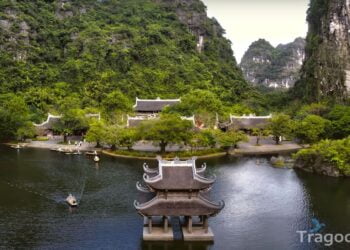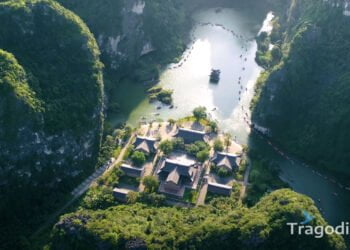
Geographical location
Ninh Binh is strategically located, serving as a trade gateway between the North and the Central regions. Ninh Binh has diverse terrain, including plains, hills, grasslands, mangrove forests, and coastal areas. Ninh Binh has many natural and cultural heritages recognized as world, national, and especially important heritages, such as: Trang An, Tam Coc – Bich Dong, Hoa Lu, Phat Diem, Cuc Phuong, Van Long, Thung Nham, Bai Dinh. Ninh Binh has many rare animals and plants, such as: langurs, crocodiles, storks, cranes, lotus flowers, buckwheat flowers, lilies…
Weather and climate
Ninh Binh has a temperate climate, with an average annual temperature of 23.4 degrees C, and an average annual rainfall of 1,700 mm. Ninh Binh has four distinct seasons: spring, summer, autumn, winter. Spring is from January to March, the weather is warm, with drizzle, suitable for visiting temples and festivals. Summer is from April to June, the weather is hot, the temperature can go up to 38 degrees C, suitable for swimming and visiting ecological tourist areas. Autumn is from July to September, the weather is cool, with rain, suitable for taking photos, sightseeing. Winter is from October to December, the weather is cold, the temperature can drop below 10 degrees C, suitable for resting, enjoying special dishes.
Ninh Binh is a province with many tourism potentials, attracting millions of visitors each year. Ninh Binh not only has beautiful landscapes but also has a rich culture, heroic history, hospitable people, and unique cuisine. Ninh Binh is a must-visit destination when traveling to Vietnam.










